Cholesteatoma
What is
Cholesteatoma?
A cholesteatoma is a serious but treatable condition that involves abnormal growth of your own skin inside your ear. The skin can grow and erode important structures inside the ear, including your ear drum and ossicles (the bones that vibrate to transfer sound to your brain). In advanced cases of cholesteatoma, the skin can erode the thin bone that separates your ear from the brain. It can also erode structures important for balance, taste, and facial movement. It is very important that you seek a fellowship trained otologist (ear specialist) if you or your doctor suspect a cholesteatoma. If caught early, a cholesteatoma can be treated easily without risking permanent damage to important structures of balance or hearing.
How is it caused?
The most common cause of cholesteatoma is chronic ear infections. Other causes include trauma, previous ear surgery, congenital cholesteatoma, sinus infections and allergies, as well as Eustachian tube dysfunction. When the Eustachian tube doesn’t work properly, it leads to chronic negative pressure on the ear drum, causing a retraction and eventually an invagination of skin into the middle ear that starts growing out of control.
How can a Cholesteatoma be diagnosed?
The most important step is to have an otologist (fellowship trained ear specialist) look in your ear with an otoscope or an otologic microscope. This can be done in the office on your first visit.
Depending on the exam findings, your otologist may also request an audiogram (hearing test) and a CT scan to better visualize the extent of the cholesteatoma and the status of the important structures behind the ear drum.
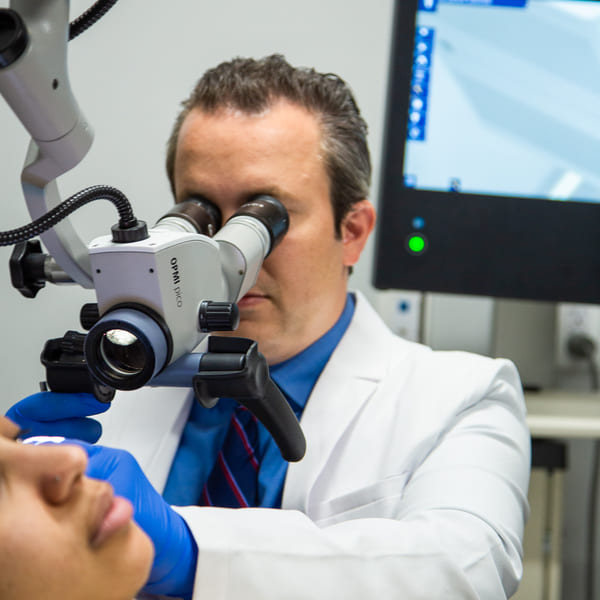
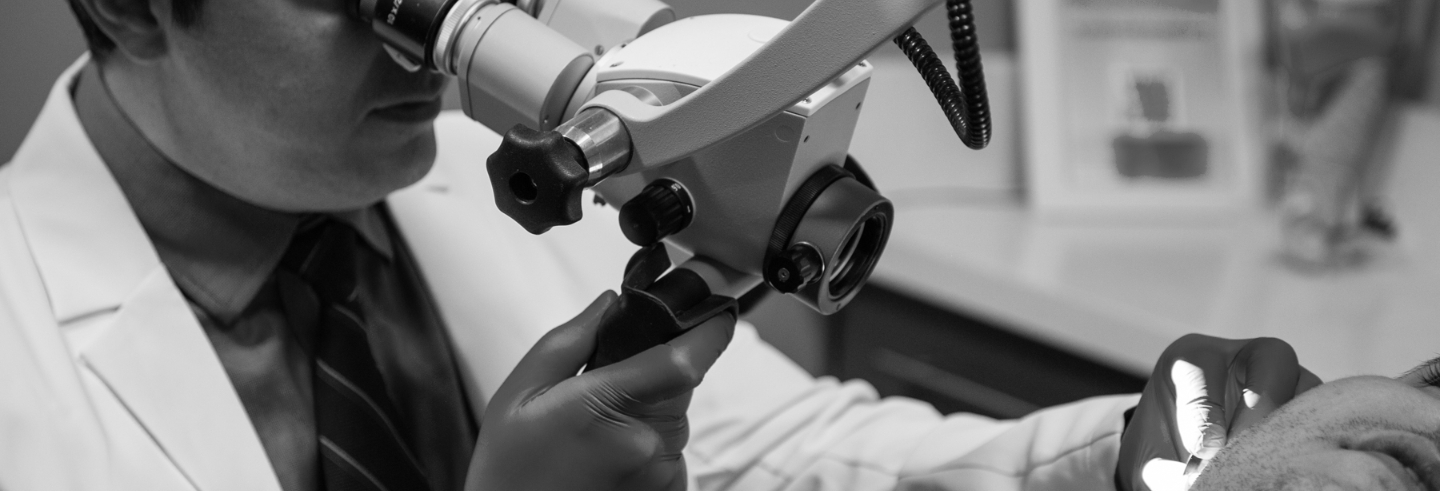
What are treatment options?
Currently, the only way to clear a cholesteatoma is by surgical excision. A cholesteatoma is usually removed and the ear drum is repaired during the same surgery. This procedure is called a tympanoplasty.
Many times, a cholesteatoma extends to the bone behind the ear and this bone needs to be dissected in order to remove the entire cholesteatoma. This step is called a mastoidectomy and is performed in conjunction with the tympanoplasty. An otologist can get an idea of whether you need a mastoidectomy during the physical exam and after the review of your CT scan.
How is the surgery done?
A tympanoplasty may be needed to repair a perforated eardrum that does not heal on its own. Signs that the eardrum is not healing include persistent hearing loss and drainage from the ear (otorrhea).
A very simple eardrum repair may be conducted in a doctor’s office with local anesthesia. But for most patients, especially children, tympanoplasty is performed in an operating room with general anesthesia. Patients can usually go home the same day.
The surgeon enters the ear
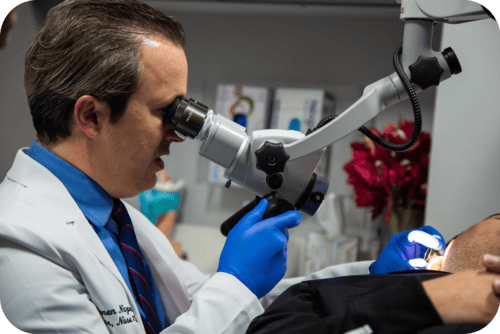
Once the patient is asleep under anesthesia the surgeon enters the ear through the ear canal or an incision behind or in front of the ear. The approach depends on the size and location of the hole in the eardrum and if the ossicles are displaced or damaged.
Locating the hole in the eardrum
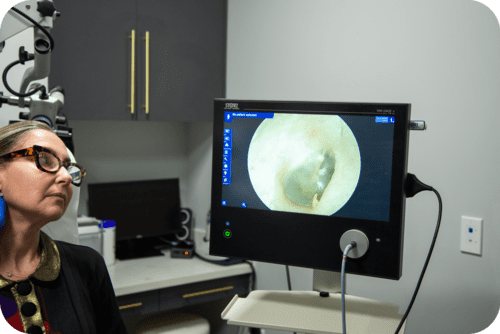
After locating the hole in the eardrum with a microscope or endoscope, the surgeon removes the edges of the hole and then closes it with a graft, which is a patch of tissue from the patient or a manufactured material. The graft supports the growth of new cells and over time closes the hole in the eardrum. The graft may cover just the hole or the entire eardrum.
The graft is secured to the ear canal
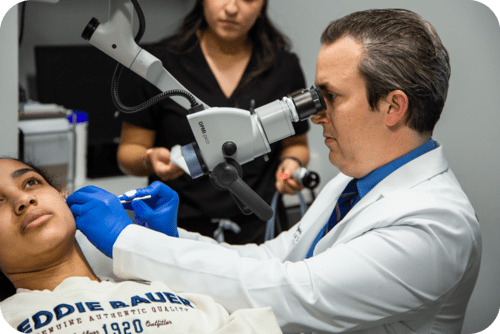
The graft is secured to the ear canal (and to other structures, depending on the type of tympanoplasty) with a spongy packing that dissolves over time as the eardrum tissue grows back together and heals. The healing process takes weeks or months.
What is the recovery process after removal of Cholesteatoma?
The surgery is performed under general anesthesia in an outpatient surgery center. This means that you will be discharged home the same day. The pain is usually easily controlled with simple pain medication. Most patients can go back to light activity at home or in the office the following day.
The otologist usually has the patient come back after 2 weeks for ear packing removal. Patients usually experience the maximum improvement in hearing about 4 to 8 weeks after surgery.
In advanced disease, not all reconstruction can be performed safely and in a sterile fashion. Therefore, the reconstruction of the ossicles may be postponed until all inflammation and infection has resolved. If a staged procedure is needed, most otologists wait at least 6 months before performing the second surgery to reconstruct the ossicles.
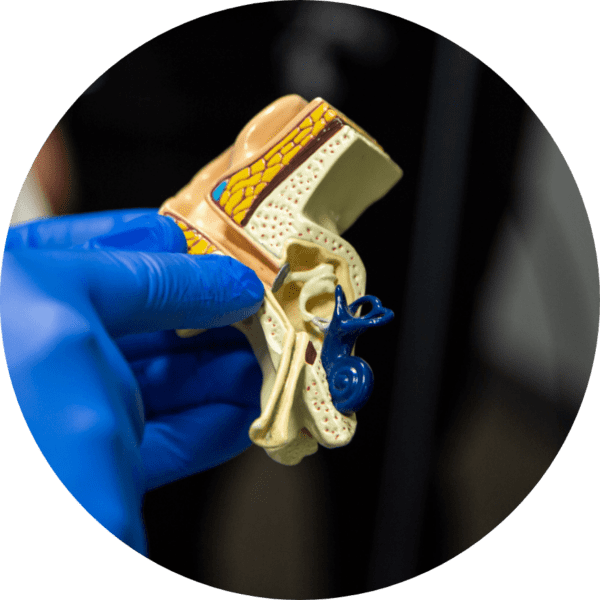
The second surgery is usually less invasive and shorter than the original surgery. The recovery period is shorter than the first, and patient usually experience maximal improvement in hearing about 4-6 weeks after the procedure.
Still have questions regarding the condition?
While the information in this website may be helpful, it will never fully relate ear treatment to you. If you are facing any ear problem, please call our office and one of our representatives will talk to you.
CONTACT USTESTIMONIALS
What are patient say about us
Thanks to the expert care and skillful ear surgery I received, my life has been transformed. I can hear clearly again, and I’m forever grateful for the life-changing experience provided by the talented team
“Dr. Nazarian, who gave me back the wonderful gift of hearing!”
“Since the very first time of seeing Dr. Nazarian, I feel that I have been in the best of care- and from the first day and through the my surgery, I have felt that Dr. Nazarian is a very compassionate and caring doctor- more than I have ever seen. I feel very fortunate to have been referred to Dr. Nazarian. He is the best!”